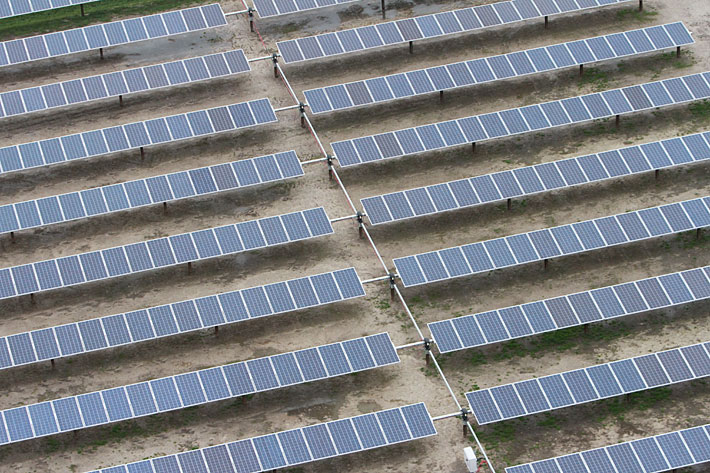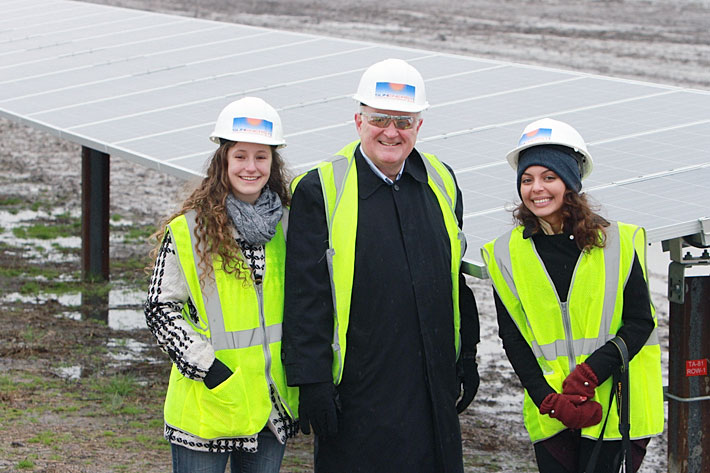George Washington President Steven Knapp, staff and students braved winter chill and muddy, washed-out grounds in North Carolina on Tuesday for a tour of the first of three Capital Partners Solar Project farms.
The walk-through of the property managed by SunEnergy1—a sub-contractor of project partner Duke Energy Renewables—came just two weeks after the university began sourcing 25 percent of its power from solar energy from the site.
Meghan Chapple, director of the Office of Sustainability in the Division of Operations, said the tour was an opportunity to see the physical manifestation of the 20-year solar energy agreement among GW, American University and George Washington University Hospital that was signed last June.
At the time of signing, it was the nation’s largest non-utility solar power purchase agreement in terms of total mega-watt hours contracted.
“We were able to see the scale of the project first hand,” Ms. Chapple said. “We were standing in the middle of a vast field of solar panels, and even with the clouds and rainy weather, we could see on the monitors that the farm was producing energy. Over the course of the day, we noticed the panels tracking the sun through sensors and gradually move from east facing from the morning to horizontal at noon and westward in the afternoon.”
GW expects 50 percent of its power to be sourced from solar energy by 2016.
To generate renewable energy, the 243,000 solar panels on the three farms absorb and convert energy from the sun to electricity which is then transmitted through the power grid. GW and partners are able to use renewable energy from the grid for electrical power needs.
The tour of the solar farm was a sneak peak of 92,000 solar panels at work on 175 acres of farmland in North Carolina. It is the first of the project's three planned solar farms. (David B. Hollingsworth/For GW Today)
In total, the three farms will comprise 243,00 solar panels and 52 megawatts of solar capacity.
“This project is the smart choice because it is financially feasible compared to traditional power sources such as fossil fuels and nuclear energy—which we believe will continue to fluctuate and escalate in price,” Ms. Chapple said.
“With this agreement we were able to lock in a 20-year fixed price for solar energy. It’s clean energy, but it also helps the university’s bottom line,” she said.
Office of Sustainability interns Zohra Roy, a senior in the Milken Institute School of Public Health, and Eleanor Davis, a junior in the Columbian College of Arts and Sciences, said the trip was an eye-opening look at GW’s sustainability efforts.
“The project is novel not only in its collaborative nature but also in size, as the largest PV project east of the Mississippi,” Ms. Roy said. “Despite the cold weather and knee-high mud, it was incredible to see the sheer size of the farm and learn first-hand all the steps involved in putting together an energy-generating solar farm.”
After touring the grounds and learning about the agreement, Ms. Davis was struck by the complexity of the project in negotiating with partners, solar and energy companies and community members.
“The project proves that it is possible for urban universities and organizations to source energy from renewable sources,” Ms. Davis said.
Looking ahead, SunEnergy1 will complete work on the grounds of the solar farm, including planting grass to revitalize the soil of the family-owned farmland.
“Renewable energy is the future and by investing in it, we are moving the university into the future,” she added.


